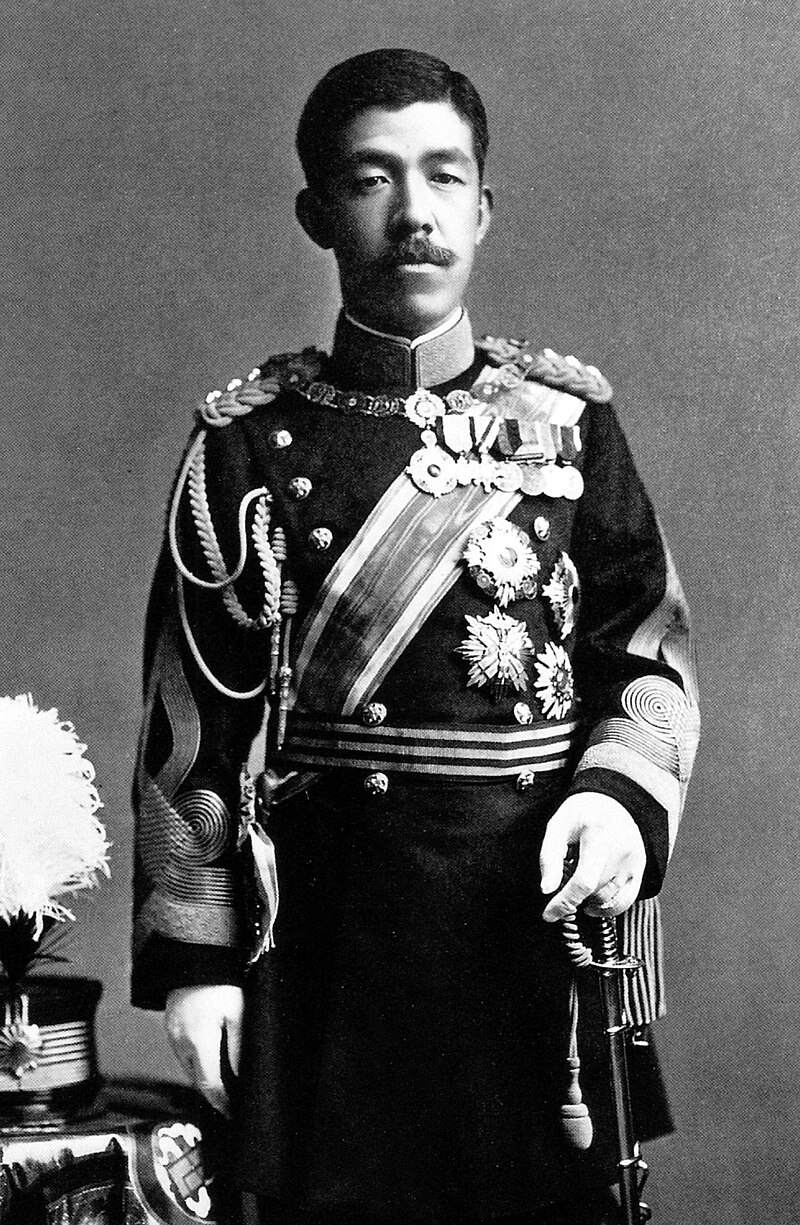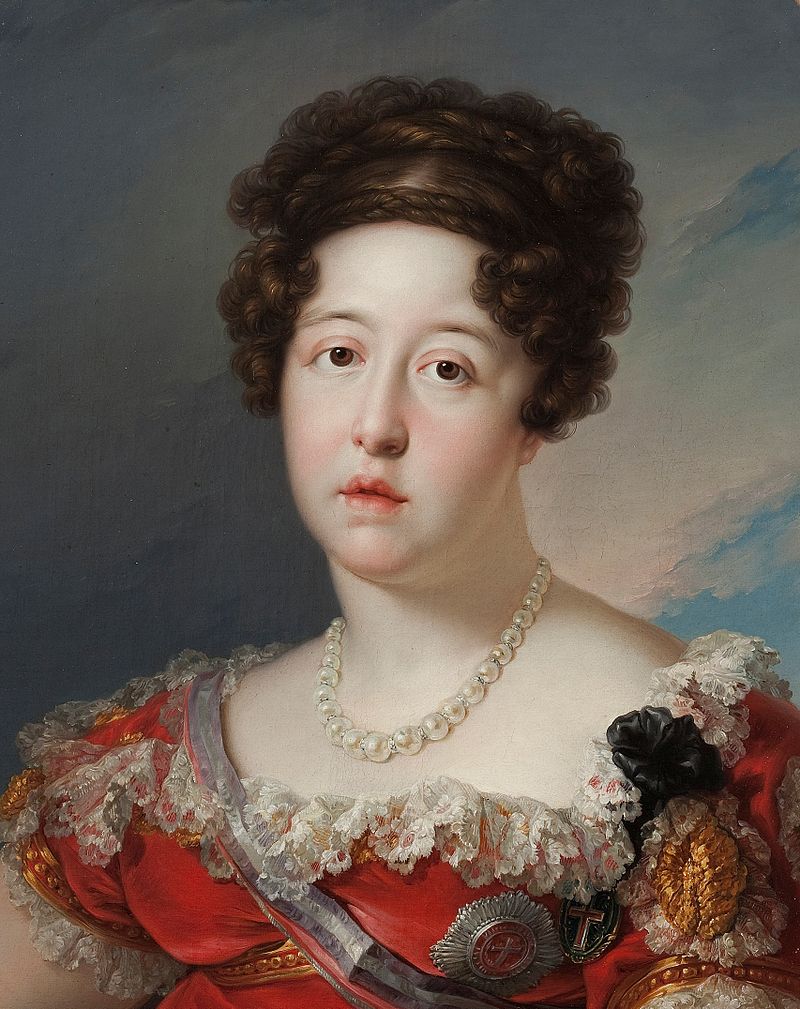© Unofficial Royalty 2024

Emperor Taisho of Japan; Credit – Wikipedia
Royal Events on December 25
December 25, 1461 – Birth of Christina of Saxony, Queen of Denmark, Norway and Sweden, wife of King Hans of Denmark, Norway, and Sweden, in Torgau, Electorate of Saxony, now in Saxony, Germany
In 1478, Christina married the future King Hans of Denmark, Norway, and Sweden. Christina and Hans had six children. In 1501, Hans began a long-term affair with Edel Jernskjæg, one of Christina’s ladies-in-waiting. The affair caused a scandal and a de facto termination of their marriage. From that time on, the marriage of Hans and Christina was one in name only. Christina was a devout Catholic (the Reformation had not yet occurred in Denmark) and she founded convents for the nuns of the Poor Clares in Copenhagen and Odense. In 1513, King Hans died from injuries after he was thrown from his horse. Christina survived her husband by eight years, dying aged 59, and was buried wearing the habit of a Poor Clares nun.
Unofficial Royalty: Christina of Saxony, Queen of Denmark, Norway and Sweden
December 25, 1584 – Birth of Margaret of Austria, Queen of Spain, wife of King Felipe III of Spain, in Graz, Austria
The daughter of Karl II, Archduke of Austria-Styria and his niece Maria Anna of Bavaria, Margaret married Felipe III, King of Spain in 1599. Felipe and Margaret, both children of parents who were an uncle and his niece, were first cousins once removed and also second cousins, adding to more inbreeding in the House of Habsburg. Margaret and Felipe III had eight children, including King Felipe III’s successor King Felipe IV and Ana María Mauricia (better known as Queen Anne of France) who married King Louis XIII of France. They were the parents of King Louis XIV of France. In 1611, Margaret died at the age of twenty-six from childbirth complications eleven days after giving birth to her eighth child.
Unofficial Royalty: Margaret of Austria, Queen of Spain
December 25, 1667 – Birth of Melusine von der Schulenburg, Duchess of Kendal, mistress of King George I of Great Britain, in Emden, Electorate of Brandenburg, now part of Altenhausen in the German state of Saxony-Anhalt
In 1691, Melusine became the mistress of George, Electoral Prince of Hanover, the future Elector of Hanover and King George I of Great Britain. Despite the fact that the future King George I had affairs while he lived in Hanover, when his wife had an affair, she was divorced, sent off to a German castle for the rest of her life, and her lover disappeared, supposedly murdered. Melusine was more like a wife to George. She accompanied him to London when he became King of Great Britain and became a naturalized British citizen. After George I’s death, Melusine lived out the remainder of her life at her London home in the companionship of a large bird, probably a raven, in which she believed that George’s soul had been reincarnated.
Unofficial Royalty: Melusine von der Schulenburg, Duchess of Kendal
December 25, 1833 – Birth of Adelheid-Marie of Anhalt-Dessau, Grand Duchess of Luxembourg, 2nd wife of Grand Duke Adolphe of Luxembourg, in Dessau, Duchy of Anhalt, now in Saxony-Anhalt, Germany
Through their mothers who were sisters, Adelheid-Marie was the first cousin of King Frederick VIII of Denmark, Queen Alexandra of the United Kingdom, King George I of Greece, Empress Marie Feodorovna of Russia, Crown Thyra Princess of Hanover, and Prince Valdemar of Denmark. Adelheid-Marie married the future Grand Duke Adolphe of Luxembourg in 1851. The couple had two surviving children including Guillaume IV, Grand Duke of Luxembourg. Adelheid-Marie died at the age of 82.
Unofficial Royalty: Adelheid-Marie of Anhalt-Dessau, Grand Duchess of Luxembourg
December 25, 1901 – Birth of Princess Alice, Duchess of Gloucester, wife of Prince Henry, Duke of Gloucester, born Lady Alice Montagu-Douglas-Scott, Duchess of Gloucester at Montagu House in London, England
Full name: Alice Christabel
Alice was the widow of King George V’s son Prince Henry, Duke of Gloucester, aunt of Queen Elizabeth II, and mother of Prince Richard, the current Duke of Gloucester. She was born Lady Alice Christabel Montagu Douglas Scott, the daughter of John Montagu Douglas Scott, 7th Duke of Buccleuch and 9th Duke of Queensberry and Lady Margaret Bridgeman. In 1935, Alice married Prince Henry, Duke of Gloucester and the couple had two sons. During the early reign of Henry’s niece Queen Elizabeth II, the Duke and Duchess of Gloucester carried out royal engagements including some overseas tours. Princess Alice died peacefully in her sleep at Kensington Palace in London at the age of 102, the longest-lived member of the British Royal Family so far.
Unofficial Royalty: Birth of Princess Alice, Duchess of Gloucester
December 25, 1902 – Birth of Princess Françoise of Greece and Denmark, second wife of Prince Christopher of Greece and Denmark, born Princess Françoise of Orléans in Paris, France
Full name: Françoise Isabelle Louise Marie
Françoise was the daughter of Prince Jean of Orléans, Duke of Guise, an Orléanist pretender to the throne of France, and Princess Isabelle of Orléans. She was a great-great-granddaughter of Louis Philippe I, King of the French, four times over and a great-granddaughter of Emperor Pedro I of Brazil and King Ferdinand VII of Spain. In 1929, she married the widowed Prince Christopher of Greece and Denmark and the couple had one son. Christopher died in 1940, at the age of 51, after suffering from a lung abscess. After her husband’s death, Françoise’s financial situation was tenuous. After living in several different places, she finally settled with her sister in Paris, France. Françoise became very introverted and greatly limited her social interactions. Suffering from depression, her health quickly declined. She died in Paris, France in 1953, just two months after her 50th birthday.
Unofficial Royalty: Françoise of Orléans, Princess Françoise of Greece and Denmark
December 25, 1926 – Death of Emperor Taishō of Japan at the Imperial Palace at Hayama, in Kanagawa Prefecture in Honshu, Japan; buried at the Musashino Imperial Mausoleum in Tokyo, Japan
Emperor Taishō’s mother Lady Naruko Yanagihara was a concubine to his father Emperor Meiji, was the last concubine to give birth to a Japanese emperor. Three weeks after his birth, Taishō suffered from cerebral meningitis and this affected his health and his mental capacity, including a speech disorder and difficulty walking, for the rest of his life. In 1900, Taishō married Lady Sadako Kujō (Empress Teimei). Because of Taishō’s diminished mental capacity, Emperor Meiji wanted an intelligent, articulate, and dignified wife for his son, and he found those qualities in Sadako. The couple had four sons including Hirohito, Emperor Shōwa. In 1912, Taishō succeeded his father as Emperor of Japan. He was kept out of public view as much as possible because of his mental incapacity. It soon became apparent that he could not carry out any public functions, participate in daily government matters, or make decisions. This was all left to his ministers and his son Crown Prince Hirohito. Finally, Crown Prince Hirohito was named Prince Regent in 1921. Taishō died of a heart attack at the age of 47.
Unofficial Royalty: Emperor Taishō of Japan
December 25, 1936 – Birth of Princess Alexandra of Kent, daughter of Prince George, Duke of Kent, at 3 Belgrave Square in London, England
Full name: Alexandra Helen Elizabeth Olga Christabel
The only daughter of Prince George, Duke of Kent and Princess Marina of Greece, Alexandra is a first cousin of Queen Elizabeth II, and through her mother, she is a first cousin once removed of Prince Philip, Duke of Edinburgh. Along with her brothers Prince Edward, Duke of Kent and Prince Michael of Kent, she grew up at Coppins, the family’s country home in Iver in Buckinghamshire, England. In 1942, her father was killed in a plane crash, just weeks after the birth of her younger brother. In the late 1950s, Princess Alexandra began to take on royal duties, supporting her cousin, Queen Elizabeth II. In 1963, Alexandra married The Honorable Angus Ogilvy, second son of David Ogilvy, 12th Earl of Airlie. The couple had one son and one daughter.
Unofficial Royalty: Princess Alexandra of Kent
December 25, 2019 – Death of Ari Behn, the former husband of Princess Märtha Louise of Norway; buried at the Cemetery of Our Saviour in Olso, Norway
Ari’s work career was diverse. He was an author, the owner of a fashion design company, the designer of a successful collection of glasses and dishes, made documentaries for television, and worked as a writer for various publications. In 2002, Ari married Princess Märtha Louise of Norway, the daughter of King Harald V of Norway. Ari and Princess Märtha Louise had three daughters. In August 2016, it was announced that the couple separated. They divorced in 2017. Sadly, Ari Behn died by suicide at his home in Lommedalen, Norway. He was 47 years old.
Unofficial Royalty: Ari Behn
Unofficial Royalty: Funeral of Ari Behn
This article is the intellectual property of Unofficial Royalty and is NOT TO BE COPIED, EDITED, OR POSTED IN ANY FORM ON ANOTHER WEBSITE under any circumstances. It is permissible to use a link that directs to Unofficial Royalty.











